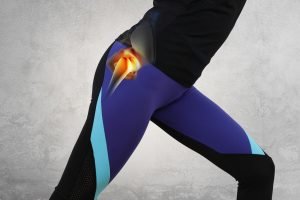coMra is a safe, non-invasive and highly effective alternative to medication for treating back, hip and shoulder pain. This type of pain can be debilitating and is one of the top 10 diseases that has the most impact on global productivity. We look at how Low Level Laser Therapy is being used to treat back pain and how coMra, with the incorporation of magnetism, light and ultra-sound really helps.
Back Pain
In 2010, the World Health Organisation conducted the Global Burden of Disease Study, which estimated that lower back pain is among the top 10 diseases and injuries that account for the highest number of DALYs (Disability-Adjusted Life Year)1 worldwide. The lifetime prevalence of lower back pain is estimated at 60% to 70% in industrialized countries.2
Download the coMra e-book for more information on coMra therapy
Ongoing research continues to validate the science and beneficial outcomes of utilising Low-Level Laser Therapy and photobiomodulation (LED light therapy) to treat acute and chronic back pain and conditions.
coMra therapy combines low-level laser therapy with the healing radiances of colour, magnetism and ultrasound to treat pain and many other conditions. Read our coMra 101 Blog for more on how it works.
Pain and the treatment of pain, like all health concerns, is a very individual matter. Response to any form of treatment, as well as coMra therapy, depends on age, overall level of health, and other conditions that may be present.
Sarika from South Africa used the coMra Delta laser to treat a torn ACL in her knee as well as a slipped disc in her lower vertebrae. She was able to restore full health and mobility with no pain and did not require surgery as had been previously recommended by her orthopaedic surgeon.3
Hip Pain and Injury

coMra laser therapy is an effective and non-invasive methodology that can be used to treat hip complaints, regardless of their root cause. Treatment protocols from the coMra User Guide can be followed to treat conditions resulting from injury or disease such as osteoarthritis.

Frozen Shoulders
Frozen shoulder (adhesive capsulitis) is a common disorder that causes pain, stiffness, and loss of normal range of motion in the shoulder. The resulting disability can be serious, and the condition tends to get worse with time if not treated. The causes are not fully understood but it is clear that an inflammatory process is involved.
The shoulder has a wider and more varied range of motion than any other part of the body. The elaborate architecture of soft tissues accounts for the shoulder’s marvellous flexibility, but also makes it vulnerable to trauma as well as chronic wear and tear. Typical treatment options include anti-inflammatory medication, corticosteroid injections and physical therapy, with a complete recovery time estimated at 2 to 3 years.4
coMra laser therapy has proved highly effective in addressing frozen shoulder conditions.
In a study conducted in 2008 into the efficacy of low-level laser therapy for treating frozen shoulders, the results indicated a significant decrease in shoulder pain and disability index scores and notable improvement in range of motion.5
coMra laser therapy has proved to be an invaluable treatment approach for a wide range of musculoskeletal conditions, from sporting injuries and accidents, to chronic conditions and diseases.





